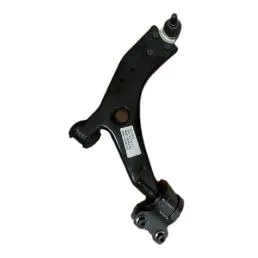
-
 Afrikaans
Afrikaans -
 Albanian
Albanian -
 Amharic
Amharic -
 Arabic
Arabic -
 Armenian
Armenian -
 Azerbaijani
Azerbaijani -
 Basque
Basque -
 Belarusian
Belarusian -
 Bengali
Bengali -
 Bosnian
Bosnian -
 Bulgarian
Bulgarian -
 Catalan
Catalan -
 Cebuano
Cebuano -
 Corsican
Corsican -
 Croatian
Croatian -
 Czech
Czech -
 Danish
Danish -
 Dutch
Dutch -
 English
English -
 Esperanto
Esperanto -
 Estonian
Estonian -
 Finnish
Finnish -
 French
French -
 Frisian
Frisian -
 Galician
Galician -
 Georgian
Georgian -
 German
German -
 Greek
Greek -
 Gujarati
Gujarati -
 Haitian Creole
Haitian Creole -
 hausa
hausa -
 hawaiian
hawaiian -
 Hebrew
Hebrew -
 Hindi
Hindi -
 Miao
Miao -
 Hungarian
Hungarian -
 Icelandic
Icelandic -
 igbo
igbo -
 Indonesian
Indonesian -
 irish
irish -
 Italian
Italian -
 Japanese
Japanese -
 Javanese
Javanese -
 Kannada
Kannada -
 kazakh
kazakh -
 Khmer
Khmer -
 Rwandese
Rwandese -
 Korean
Korean -
 Kurdish
Kurdish -
 Kyrgyz
Kyrgyz -
 Lao
Lao -
 Latin
Latin -
 Latvian
Latvian -
 Lithuanian
Lithuanian -
 Luxembourgish
Luxembourgish -
 Macedonian
Macedonian -
 Malgashi
Malgashi -
 Malay
Malay -
 Malayalam
Malayalam -
 Maltese
Maltese -
 Maori
Maori -
 Marathi
Marathi -
 Mongolian
Mongolian -
 Myanmar
Myanmar -
 Nepali
Nepali -
 Norwegian
Norwegian -
 Norwegian
Norwegian -
 Occitan
Occitan -
 Pashto
Pashto -
 Persian
Persian -
 Polish
Polish -
 Portuguese
Portuguese -
 Punjabi
Punjabi -
 Romanian
Romanian -
 Russian
Russian -
 Samoan
Samoan -
 Scottish Gaelic
Scottish Gaelic -
 Serbian
Serbian -
 Sesotho
Sesotho -
 Shona
Shona -
 Sindhi
Sindhi -
 Sinhala
Sinhala -
 Slovak
Slovak -
 Slovenian
Slovenian -
 Somali
Somali -
 Spanish
Spanish -
 Sundanese
Sundanese -
 Swahili
Swahili -
 Swedish
Swedish -
 Tagalog
Tagalog -
 Tajik
Tajik -
 Tamil
Tamil -
 Tatar
Tatar -
 Telugu
Telugu -
 Thai
Thai -
 Turkish
Turkish -
 Turkmen
Turkmen -
 Ukrainian
Ukrainian -
 Urdu
Urdu -
 Uighur
Uighur -
 Uzbek
Uzbek -
 Vietnamese
Vietnamese -
 Welsh
Welsh -
 Bantu
Bantu -
 Yiddish
Yiddish -
 Yoruba
Yoruba -
 Zulu
Zulu
Understanding the Function and Importance of Rear Control Arm in Vehicle Dynamics
Understanding the Rear Control Arm A Key Component in Vehicle Suspension Systems
The rear control arm is a crucial component in modern automotive suspension systems. Serving as a link between the vehicle's chassis and its rear wheels, the control arm plays an essential role in achieving optimal handling, ride quality, and overall vehicle stability. In this article, we will explore what rear control arms are, their functions, the different types available, and how they contribute to vehicle performance.
Firstly, let's define what a rear control arm is. It is a type of suspension arm that connects the rear axle or wheel hub to the vehicle’s frame or body. Typically consisting of a forged steel or aluminum structure, the arm is characterized by its ability to pivot at one end, allowing for vertical motion while maintaining lateral stability. This design is fundamental to the vehicle's ability to respond effectively to road conditions and driver inputs.
The primary function of the rear control arm is to manage the vertical and lateral movements of the rear wheels. When a vehicle is in motion, the wheels encounter various forces from the road, including bumps, turns, and braking forces. The rear control arm helps to isolate these forces, allowing the vehicle to absorb shocks and maintain contact with the road surface. This, in turn, enhances traction, provides stability during cornering, and ensures a smooth ride.
rear control arm

There are primarily two types of rear control arms the multi-link and the trailing arm. The multi-link design consists of several arms that work together to provide enhanced handling and adjustability. It allows for precise tuning of suspension geometry, which can improve the vehicle's responsiveness to steering inputs. Multi-link systems are commonly found in higher-end vehicles and performance-oriented designs due to their ability to maintain better tire contact during dynamic driving conditions.
On the other hand, the trailing arm is a simpler design often used in more economical vehicles. It consists of a single arm that extends from the vehicle body to the axle. While trailing arms are effective in providing stability and managing vertical motion, they typically offer less adjustability compared to multi-link systems. Despite this, many vehicles equipped with trailing arms provide a comfortable ride and adequate handling for everyday driving.
One of the most critical aspects of maintaining a vehicle with rear control arms is regular inspection and maintenance. Over time, these components can wear out due to constant stress and exposure to road debris and environmental factors. Signs of wear may include unusual noises when driving, poor handling, or uneven tire wear. If a driver notices any of these symptoms, it is essential to have the suspension system inspected by a qualified technician.
In conclusion, the rear control arm is an integral part of a vehicle’s suspension system, contributing significantly to ride quality, handling, and overall safety. Understanding the different types of control arms and their functions can help car owners appreciate the engineering behind their vehicles. Whether a car uses a multi-link or trailing arm suspension, maintaining these components is crucial for optimal vehicle performance and longevity. Regular inspections and timely replacements can ensure that the suspension system remains in excellent condition, enhancing the overall driving experience.







